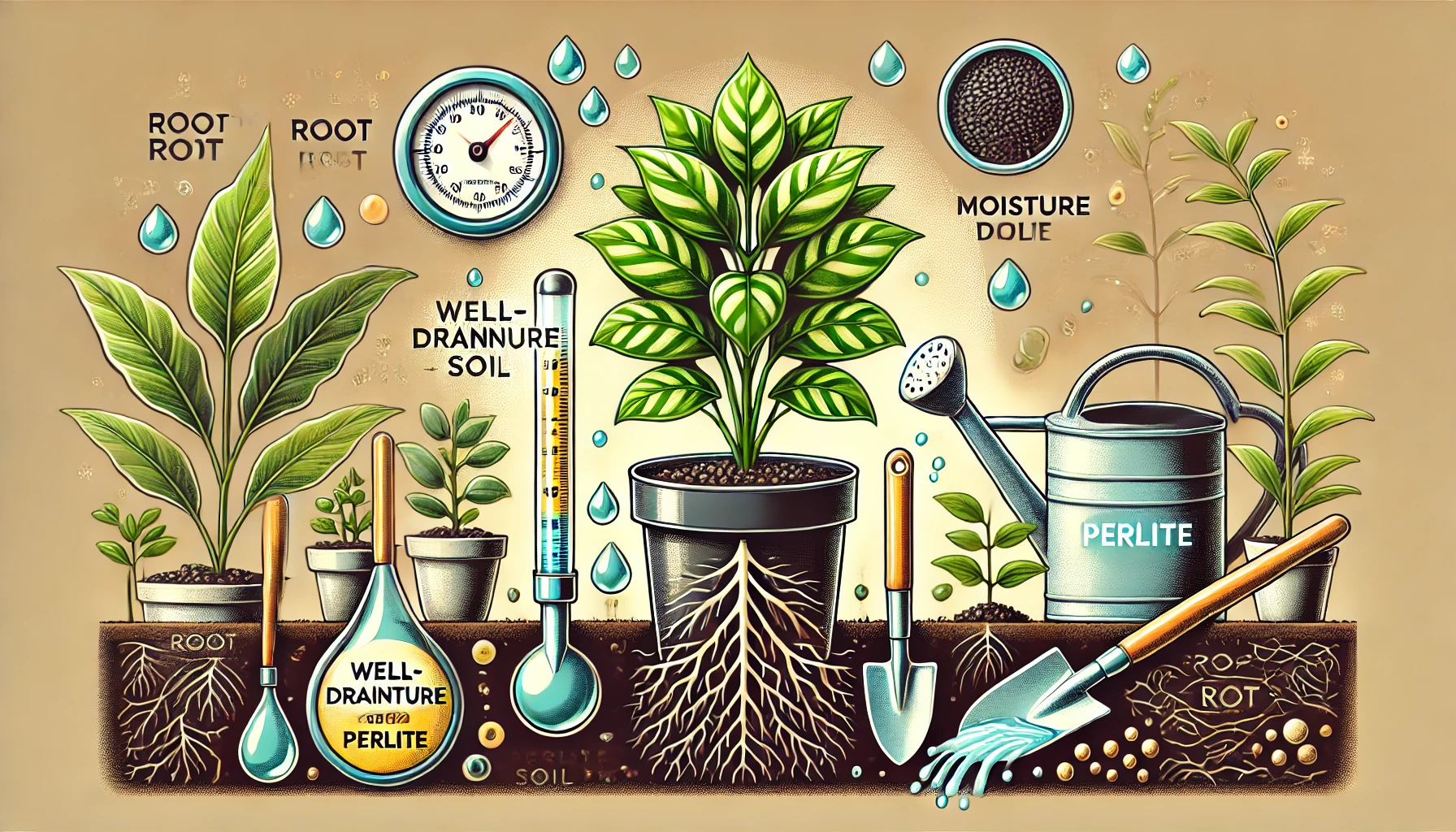Root rot is a common issue that can devastate your plants if not addressed. Caused by overwatering or poorly draining soil, it leads to decaying roots and eventual plant death if untreated. Preventing root rot is easier than treating it, and with the right care, you can keep your plants healthy and thriving. In this article, we’ll cover the causes of root rot and effective ways to prevent it.
What Causes Root Rot?
Root rot occurs when the roots of a plant are submerged in water for too long, creating an environment where harmful fungi and bacteria thrive. This condition often results from:
- Overwatering: Excessive watering suffocates the roots by depriving them of oxygen.
- Poor Drainage: Pots without drainage holes or compacted soil can trap water around the roots.
- Inappropriate Pot Size: Oversized pots hold too much water in the soil, increasing the risk of rot.
- Contaminated Soil: Soil that contains pathogens can lead to fungal infections in roots.
How to Prevent Root Rot
1. Use Well-Draining Soil
The foundation of healthy roots starts with the right soil. Use a potting mix tailored to your plant type. Add materials like perlite, sand, or orchid bark to improve drainage, especially for plants like succulents or cacti that prefer drier conditions.
2. Choose Pots with Drainage Holes
Always use pots with drainage holes to allow excess water to escape. For decorative pots without drainage, place the plant in a smaller pot with holes and use the decorative pot as a cover.
3. Water Only When Necessary
Check the soil’s moisture level before watering. Insert your finger about an inch into the soil; if it feels dry, it’s time to water. Avoid watering on a strict schedule, as different plants have varying needs based on light, temperature, and humidity.
4. Avoid Overpotting
Select a pot size that matches the plant’s root ball. Oversized pots retain more water, increasing the risk of waterlogged soil.
5. Sterilize Soil and Tools
Ensure the soil is fresh and free from pathogens before potting. Sterilize your gardening tools with rubbing alcohol or bleach solution to prevent contamination.
6. Ensure Proper Ventilation
Good air circulation around plants helps prevent excessive moisture buildup. Use fans or open windows to improve airflow in indoor environments.
7. Use a Watering Technique That Works
Bottom watering can be an effective method for some plants. Place the pot in a tray of water and allow the soil to soak up moisture through the drainage holes. This prevents over-saturating the surface while ensuring roots get the hydration they need.
8. Monitor Humidity Levels
Tropical plants love humidity, but excessive moisture in the air can increase the risk of fungal growth. Use a hygrometer to measure humidity and adjust using a humidifier or dehumidifier as needed.
Signs of Healthy Roots
Healthy roots are firm, white, or light tan. Regularly check the roots when repotting to ensure they are in good condition. If roots appear mushy, black, or emit a foul odor, root rot may be present.
Quick Tips for Preventing Root Rot
- Always empty saucers or trays after watering to prevent standing water.
- Group plants with similar watering needs together to streamline care.
- Avoid using garden soil for indoor plants, as it retains too much moisture.
- Keep an eye on new plants to ensure they adapt well to their environment.
The Importance of Prevention
Preventing root rot not only saves your plants but also reduces the effort and cost of treating advanced cases. By maintaining proper watering practices, using the right soil, and ensuring good drainage, you create an environment where your plants can thrive without the threat of rot.
Healthy roots mean healthy plants. With these simple steps, you can enjoy a vibrant, flourishing collection of greenery for years to come.
